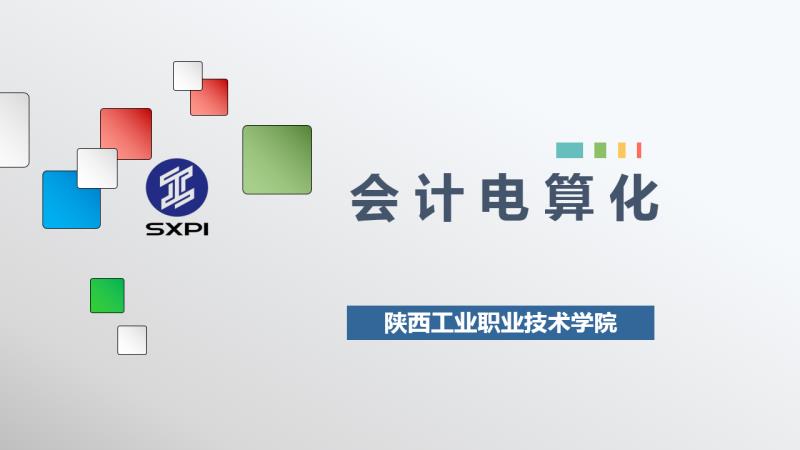
当前课程知识点:Five Disciplines of Management Quality and Ability —— Follow Me to Learn Management > Course Introduction: Understanding Management and Management Science > 0.5 Case Study: Personal Excellence Doesn’t Mean Much > 0.5 Case Study: Personal Excellence Doesn’t Mean Much
返回《Five Disciplines of Management Quality and Ability —— Follow Me to Learn Management》慕课在线视频课程列表
返回《Five Disciplines of Management Quality and Ability —— Follow Me to Learn Management》慕课在线视频列表
大家好
现在我们一起来讨论一个案例
个人优秀意义并不大
小李在美国进修信息管理硕士学位
有一门课要求他们
每四个人一组到企业去实践
帮助企业开发管理软件
由于同组另外三个美国学生
对程序开发都没有什么概念
小李几乎是独立完成了所有的工作
终于拖到了结案
厂商及老师对他们开发的
管理软件都非常满意
第二天
小李满怀希望地跑去看成绩
结果竟然只是一个B
更气人的是
另外那三个美国学生成绩都是A
小李懊恼极了
赶快跑去找老师
老师 为什么其他人都是A 只有我是B
噢 那是因为你的组员认为
你对这个小组没有什么贡献
老师 你应该知道那个程序
几乎是我一个人弄出来的
哦 是啊 但他们都这样说啊
老师 说起贡献
杰克每次都是我叫他来开会
他都推三阻四 不愿意参与
对呀 但杰克说那是因为
你每次开会都不听他们的
所以他觉得他没有必要来开会
那吉米呢
他每次写的程序几乎都不能用
都是我完全改写后才能用
是啊 就是这样
吉米觉得他没有得到尊重
就越来越不喜欢参与
他认为你应该为这件事负主要责任
那撇开这两个不谈 麦瑞呢
她除了晚上帮我们喊Pizza外
几乎什么都没做 为什么她也能拿A
麦瑞啊 杰克和吉米认为
她对于挽救贵组陷于分崩离析
贡献最大 所以应该得A
亲爱的老师 我想不明白
可怜的孩子 你会打篮球吗
这件事情到底与篮球有什么关系
小李想不明白
请大家思考一下
如果请你对小李进行评价
ABCD四个等级
你会给小李评哪个等级
请大家注意
我们仅仅对小李作出评价
我们不对其他任何成员包括老师在内
做出任何的评价
请不仅给出等级
而且一定要从管理基本原理角度给出依据
这个案例
我在给一些公司做培训时
多次组织大家进行过讨论
大家讨论非常的激烈
有人认为
小李完成了组织的交给任务
从结果导向角度出发
应该给小李评定的等级为A
当然 也有人认为应该评为B
或者C 甚至有人认为应该评为D
为什么大家给小李评出不同的等级呢
原因是什么呢
原因就在于我们大家所依据的
绩效评价体系不完全一样
由于评价体系不相同
我们对同一个人
当然会给出不同的评价等级
接下来
请大家思考一个问题
作为一家企业
我们到底应该建立
怎样一种评价体系
我们的评价体系是
强调公司今天事情的完成
还是更应该去强调
公司未来更好的成长和更好的发展呢
显然
我们公司的绩效评价体系是应该
立足公司未来长期的更好的发展
如果我们的绩效评价体系是
仅仅只强调今天事情的完成
小李当然应该评为A
但如果我们强调的是
未来公司更好的成长和更好的发展
小李是否应该评为A
我们就值得思考了
我再请大家思考一个问题
小李是否完成了组织的任务
很多人告诉我
小李当然是完成了组织的任务呀
我的回答是
小李只是完成了组织
交给他的一件具体事情
但是并没有完成组织交付的任务
管理者的职责是什么
什么是管理
在前面的课程中
我们曾经跟大家说过
管理就是通过他人的努力去实现组织的目标
作为管理者来说
我们具有双重职责
一是完成具体的事情
更重要的是在完成事情的过程中
提升团队成员的能力
未来组织交付的更重要更复杂的任务
我们这个团队能够更好地去完成
请大家思考一下
这一次小李依靠单打独斗
很侥幸地完成了软件开发这项工作
下一次这个团队还能完成相同的工作吗
下一次更重要的工作 更复杂的任务
这个团队还能够完成吗
不一定吧
因此 我们说
小李并没有完成组织交给他的任务
下面我们来给小李去具体的评定等级
小李在这个小组当中
他既是个专业技术人员 又是管理者
我是分别从两个不同的角色
给小李评定等级
首先他是一个专业技术人员
作为专业技术人员
他应该评为A吗
最优秀的专业技术人员应该怎么做
在强调知识经济和团队分享的今天
优秀的专业技术人员不仅仅能够完成事情
更重要的是什么
他愿意将自己好的知识和经验
与团队成员一起去分享
这才是我们今天真正
优秀的专业技术人员
显然从专业技术人员角度去考核
小李最多也是B
我们再从管理人员角度考核
我给小李的等级是D
小李完全没有发挥管理人员的职能
作为管理人员不仅仅是
去完成一件具体的事情
更最重要的职能是通过充分调动
团队成员的积极性
去共同完成组织的目标
在完成具体事情的过程中
提升团队成员的能力
让团队获得成长
未来组织更重要更复杂的工作
这个团队能够更好地完成
一个是B 一个是D
我最后给小李评定的综合等级是C
当然 我丝毫不否认
如果给小李评定是C
其他成员当然不应该评为A
我们讨论这个案例的真实目的
并不是去给小李评定一个具体的等级
我们想通过这个案例讨论让大家明白
作为管理者
我们必须认识到
管理者与操作者的职能是有区别的
管理者重要的职能是
去充分调动团队成员的积极性
通过团队成员的共同努力达成组织目标
在课程结束前
针对这个案例
我给大家留下一个进一步讨论的话题
请大家 用一用
1从管理者三大技能 技术技能
人际技能 决策技能
角度来如何评小李
2在哪些情况下 我们可以给小李评定为A
3如果要给小李调整工作岗位
在不影响小李工作积极性前提下
你认为最适合小李的工作岗位是什么
关于思考题的答案
我们会在课程的互动讨论区与大家一起讨论
并给出我们的建议
好 这次课就到这里
下次课见
-0.1 What is Management: The Secret of Management is to Borrow Resources
--0.1 What is Management: The Secret of Management is to Borrow Resources
--0.1 What is Management: The Secret of Management is to Borrow Resources
--0.1 What is Management: The Secret of Management is to Borrow Resources
-0.2 Natural Attribute and Social Attribute of Management
--0.2 Natural Attribute and Social Attribute of Management
--0.2 Natural Attribute and Social Attribute of Management
--0.2 Natural Attribute and Social Attribute of Management
-0.3 The Scientificity and Artistry of Management
--0.3 The Scientificity and Artistry of Management
--0.3 The Scientificity and Artistry of Management
--0.3 The Scientificity and Artistry of Management
-0.4 Management Functions, Skills and Roles
--0.4 Management Functions, Skills and Roles
--0.4 Management Functions, Skills and Roles
--0.4 Management Functions, Skills and Roles
-0.5 Case Study: Personal Excellence Doesn’t Mean Much
--0.5 Case Study: Personal Excellence Doesn’t Mean Much
--0.5 Case Study: Personal Excellence Doesn’t Mean Much
--0.5 Case Study: Personal Excellence Doesn’t Mean Much
-0.6 Centennial Management Context (Ⅰ)
--0.6 Centennial Management Context (Ⅰ)
--0.6 Centennial Management Context (Ⅰ)
--0.6 Centennial Management Context (Ⅰ)
-0.7 Centennial Management Context (Ⅱ)
--0.7 Centennial Management Context (Ⅱ)
--0.7 Centennial Management Context (Ⅱ)
--0.7 Centennial Management Context (Ⅱ)
-0.8 Case Study: Management Enlightenment of Journey to the West Team
--0.8 Case Study: Management Enlightenment of Journey to the West Team
--0.8 Case Study: Management Enlightenment of Journey to the West Team
--0.8 Case Study: Management Enlightenment of Journey to the West Team
-Course Introduction Unit Test
-1.1 Insight into the General Trend of the Environment (Ⅰ): PEST Method
--1.1 Insight into the General Trend of the Environment (Ⅰ): PEST Method
--1.1 Insight into the General Trend of the Environment (Ⅰ): PEST Method
--1.1 Insight into the General Trend of the Environment (Ⅰ): PEST Method
-1.2 Insight into the General trend of the Environment (Ⅱ): Porter’s Five Forces Model
--1.2 Insight into the General trend of the Environment (Ⅱ): Porter’s Five Forces Model
--1.2 Insight into the General trend of the Environment (Ⅱ): Porter’s Five Forces Model
--1.2 Insight into the General trend of the Environment (Ⅱ): Porter’s Five Forces Model
-1.3 Case Study: How McDonald’s Entered Chinese Market
--1.3 Case Study: How McDonald’s Entered Chinese Market
--1.3 Case Study: How McDonald’s Entered Chinese Market
--1.3 Case Study: How McDonald’s Entered Chinese Market
-1.4 Strategic Decision Analysis Tools: SWOT Analysis and BCG Matrix
--1.4 Strategic Decision Analysis Tools: SWOT Analysis and BCG Matrix
--1.4 Strategic Decision Analysis Tools: SWOT Analysis and BCG Matrix
--1.4 Strategic Decision Analysis Tools: SWOT Analysis and BCG Matrix
-1.5 Group Decision-making Tools and Methods: Delphi Method and Brainstorming Method
--1.5 Group Decision-making Tools and Methods: Delphi Method and Brainstorming Method
--1.5 Group Decision-making Tools and Methods: Delphi Method and Brainstorming Method
--1.5 Group Decision-making Tools and Methods: Delphi Method and Brainstorming Method
-The First Unit Test
-2.1 Attitude Determines Everything
--2.1 Attitude Determines Everything
--2.1 Attitude Determines Everything
--2.1 Attitude Determines Everything
-2.2 The Components and Formation of Attitude
--2.2 The Components and Formation of Attitude
--2.2 The Components and Formation of Attitude
--2.2 The Components and Formation of Attitude
-2.3 How to Change the Attitude of Employees
--2.3 How to Change the Attitude of Employees
--2.3 How to Change the Attitude of Employees
--2.3 How to Change the Attitude of Employees
-2.4 Responsibility and Efficient Execution
--2.4 Responsibility and Efficient Execution
--2.4 Responsibility and Efficient Execution
--2.4 Responsibility and Efficient Execution
-2.5 Ethics and Core Values
-The Second Unit Test
-3.1 Basic Issues in Organization
--3.1 Basic Issues in Organization
--3.1 Basic Issues in Organization
--3.1 Basic Issues in Organization
-3.2 How to Establish an Effective Organizational Structure (Ⅰ)
--3.2 How to Establish an Effective Organizational Structure (Ⅰ)
--3.2 How to Establish an Effective Organizational Structure (Ⅰ)
--3.2 How to Establish an Effective Organizational Structure (Ⅰ)
-3.3 How to Establish an Effective Organizational Structure (Ⅱ)
--3.3 How to Establish an Effective Organizational Structure (Ⅱ)
--3.3 How to Establish an Effective Organizational Structure (Ⅱ)
--3.3 How to Establish an Effective Organizational Structure (Ⅱ)
-3.4 Case Study: The Responsibility of the Sales Department
--3.4 Case Study: The Responsibility of the Sales Department
--3.4 Case Study: The Responsibility of the Sales Department
--3.4 Case Study: The Responsibility of the Sales Department
-3.5 Effective Communication Skills
--3.5 Effective Communication Skills
--3.5 Effective Communication Skills
--3.5 Effective Communication Skills
-3.6 Organizational Cultural Function and Content
--3.6 Organizational Cultural Function and Content
--3.6 Organizational Cultural Function and Content
--3.6 Organizational Cultural Function and Content
-3.7 Case Study: Resignation (Ⅰ)
--3.7 Case Study: Resignation (Ⅰ)
--3.7 Case Study: Resignation (Ⅰ)
--3.7 Case Study: Resignation (Ⅰ)
-3.8 Case Study: Resignation (Ⅱ)
--3.8 Case Study: Resignation (Ⅱ)
--3.8 Case Study: Resignation (Ⅱ)
--3.8 Case Study: Resignation (Ⅱ)
-The Third Discipline Unit Test
-4.1 How to Recruit Good Staff
--4.1 How to Recruit Good Staff
--4.1 How to Recruit Good Staff
--4.1 How to Recruit Good Staff
-4.2 Motivate Employees’ Work Potential
--4.2 Motivate Employees’ Work Potential
--4.2 Motivate Employees’ Work Potential
--4.2 Motivate Employees’ Work Potential
-4.3 Content-based Incentive Theory (Ⅰ): Hierarchical Theory and ERG theory
--4.3 Content-based Incentive Theory (Ⅰ): Hierarchical Theory and ERG theory
--4.3 Content-based Incentive Theory (Ⅰ): Hierarchical Theory and ERG theory
--4.3 Content-based Incentive Theory (Ⅰ): Hierarchical Theory and ERG theory
-4.4 Content-based Incentive Theory (Ⅱ): Motivator-Hygiene Theory
--4.4 Content-based Incentive Theory (Ⅱ): Motivator-Hygiene Theory
--4.4 Content-based Incentive Theory (Ⅱ): Motivator-Hygiene Theory
--4.4 Content-based Incentive Theory (Ⅱ): Motivator-Hygiene Theory
-4.5 Process-based Incentive theory: Expectation Theory and Fairness Theory
--4.5 Process-based Incentive theory: Expectation Theory and Fairness Theory
--4.5 Process-based Incentive theory: Expectation Theory and Fairness Theory
--4.5 Process-based Incentive theory: Expectation Theory and Fairness Theory
-4.6 Behavioral Transformation Incentive Theory: Reinforcement Theory
--4.6 Behavioral Transformation Incentive Theory: Reinforcement Theory
--4.6 Behavioral Transformation Incentive Theory: Reinforcement Theory
--4.6 Behavioral Transformation Incentive Theory: Reinforcement Theory
-The Fourth Unit Test
-5.1 The Essence and Tasks of Effective Leaders
--5.1 The Essence and Tasks of Effective Leaders
--5.1 The Essence and Tasks of Effective Leaders
--5.1 The Essence and Tasks of Effective Leaders
-5.2 Trait Theory of Leadership
--5.2 Trait Theory of Leadership
--5.2 Trait Theory of Leadership
--5.2 Trait Theory of Leadership
-5.3 Leadership Behavior Theory
--5.3 Leadership Behavior Theory
--5.3 Leadership Behavior Theory
--5.3 Leadership Behavior Theory
-5.4 Leadership Situation Theory
--5.4 Leadership Situation Theory
--5.4 Leadership Situation Theory
--5.4 Leadership Situation Theory
-5.5 Innovation and Entrepreneurship
--5.5 Innovation and Entrepreneurship
--5.5 Innovation and Entrepreneurship
--5.5 Innovation and Entrepreneurship
-5.6 Two New Trends of Innovation
--5.6 Two New Trends of Innovation
--5.6 Two New Trends of Innovation
--5.6 Two New Trends of Innovation
-The Fifth Unit Test
-Final Exam


